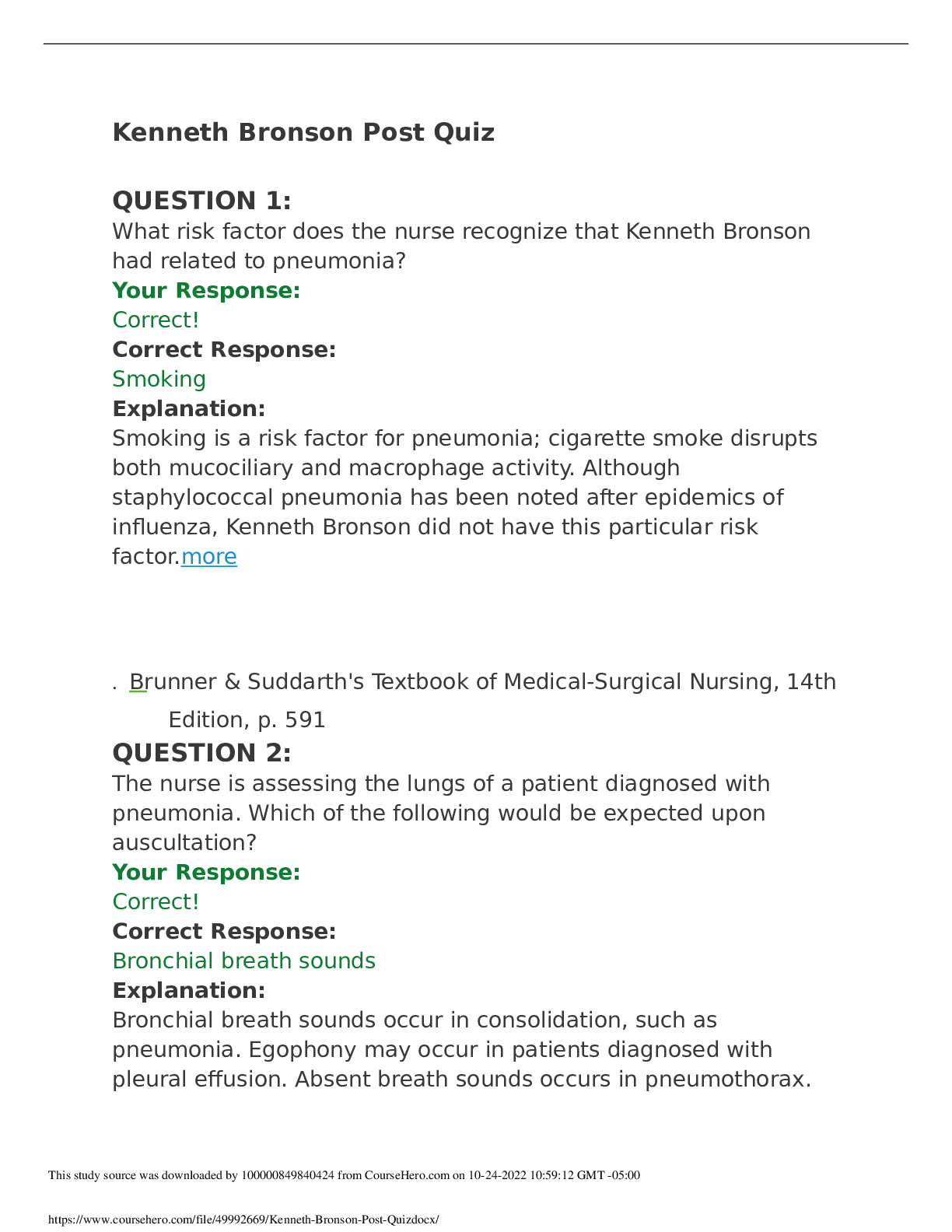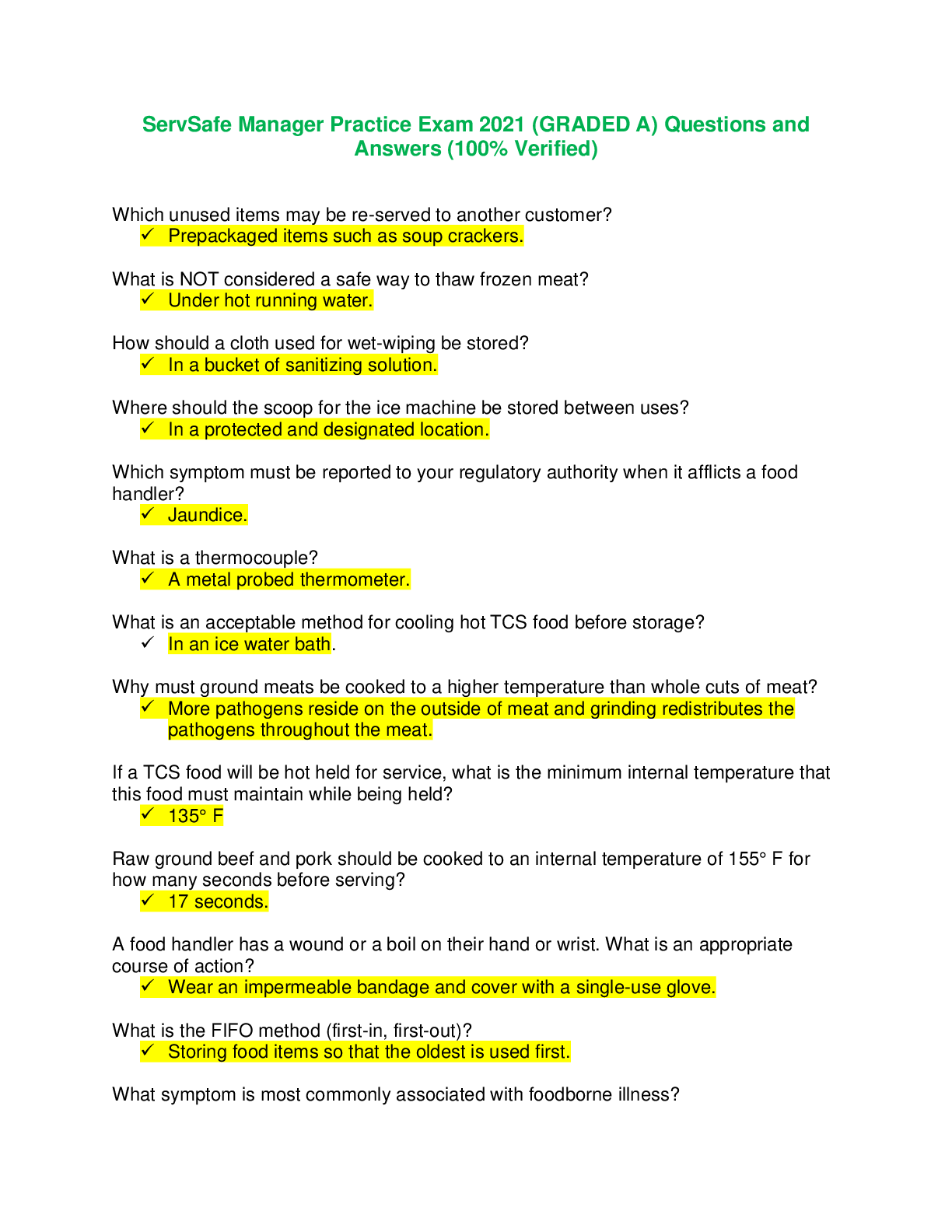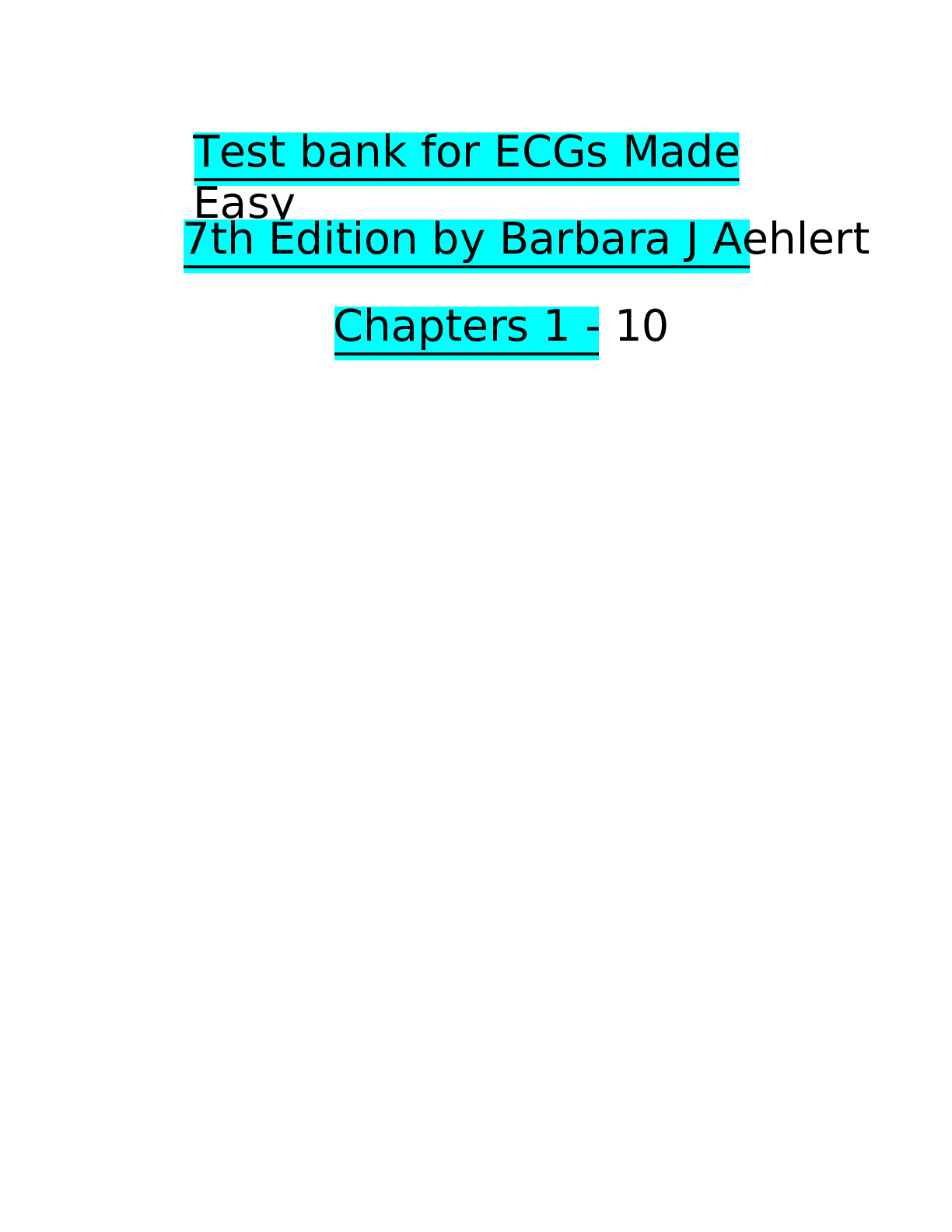TEST BANK FOR ECGS MADE EASY 6TH EDITION BY BARBARA Chapter 10: Post-Test
Document Content and Description Below
Chapter 10: Post-Test Test Bank TRUE/FALSE 1. The term acute coronary syndromes refers to patients presenting with ischemic chest pain. ANS: T Acute coronary syndrome (ACS) is a term used to refer to ... distinct conditions caused by a similar sequence of pathologic events—a temporary or permanent blockage of a coronary artery. These conditions are characterized by an excessive demand or inadequate supply of oxygen and nutrients to the heart muscle associated with plaque disruption, thrombus formation, and vasoconstriction. ACSs consist of three major syndromes: unstable angina (UA), non–ST-segment elevation myocardial infarction (NSTEMI), and ST segment elevation myocardial infarction (STEMI). OBJ: Define and explain acute coronary syndromes. 2. In the limb leads, the ST-segment is normally isoelectric. ANS: T The normal ST segment begins at the isoelectric line, extends from the end of the S wave, and curves gradually upward to the beginning of the T wave. In the limb leads, the normal ST segment is isoelectric (flat), but may normally be slightly elevated or depressed. OBJ: Define and describe the significance of each of the following as they relate to cardiac electrical activity: the P wave, the QRS complex, the T wave, the U wave, the PR segment, the TP segment, the ST segment, the PR interval, the QRS duration, and the QT interval. 3. A Q wave, if present, is always a negative waveform. ANS: T The QRS complex begins as a downward deflection, the Q wave. A Q wave is always a negative waveform. The Q wave begins when the ECG leaves the isoelectric line in a downward direction and continues until it returns to the isoelectric line. The Q wave represents depolarization of the interventricular septum, which is activated from left to right. OBJ: Define and describe the significance of each of the following as they relate to cardiac electrical activity: the P wave, the QRS complex, the T wave, the U wave, the PR segment, the TP segment, the ST segment, the PR interval, the QRS duration, and the QT interval. 4. The point where the QRS complex and ST segment meet is called the ST junction or the J point. ANS: T The point where the QRS complex and the ST segment meet is called the ST junction or the J point. The ST segment is considered elevated if the segment is deviated above the baseline and is considered depressed if the segment deviates below it. OBJ: Define and describe the significance of each of the following as they relate to cardiac electrical activity: the P wave, the QRS complex, the T wave, the U wave, the PR segment, the TP segment, the ST segment, the PR interval, the QRS duration, and the QT interval. 5. The term ectopic refers to an extra muscle bundle consisting of working myocardial tissue that forms a connection between the atria and ventricles outside the normal conduction system. ANS: F The term ectopic, which means out of place, is used to describe an impulse that originates from a source other than the SA node. Ectopic pacemaker sites include the cells of the AV bundle and Purkinje fibers, although their intrinsic rates are slower than that of the SA node. OBJ: N/A 6. The six limb leads view the heart in the frontal plane as if the body were flat. ANS: T Frontal plane leads view the heart from the front of the body as if it were flat. Directions in the frontal plane are superior, inferior, right, and left. Six leads view the heart in the frontal plane. Leads I, II, and III are called standard limb leads. Leads aVR, aVL, and aVF are called augmented limb leads. OBJ: Differentiate between the frontal plane and the horizontal plane leads. 7. Individuals with preexcitation syndrome are predisposed to tachydysrhythmias. [Show More]
Last updated: 2 years ago
Preview 1 out of 16 pages

Buy this document to get the full access instantly
Instant Download Access after purchase
Buy NowInstant download
We Accept:

Reviews( 0 )
$6.00
Can't find what you want? Try our AI powered Search
Document information
Connected school, study & course
About the document
Uploaded On
Jul 23, 2021
Number of pages
16
Written in
Additional information
This document has been written for:
Uploaded
Jul 23, 2021
Downloads
0
Views
114





 Questions and Answers 100% VERIFIED.png)
 Questions and Answers 100% correct Solutions.png)















